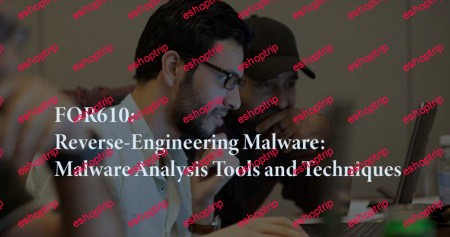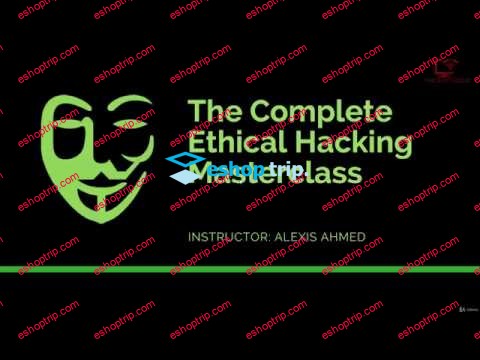Anuj Soni, Jake Williams, Lenny Zeltser | Duration: 12h 32m | Video: H264 1294×720 | Audio: AAC 44,1 kHz mono | 43,9 GB | Language: English
2015 + 2018 Versions + Virtual machines
Learn to turn malware inside out!
This popular course explores malware analysis tools and techniques in depth. FOR610 training has helped forensic investigators, incident responders, security eeers, and IT administrators acquire the practical skills to examine malicious programs that target and infect Windows systems.
Learn to turn malware inside out! This popular reversing course explores malware analysis tools and techniques in depth. FOR610 training has helped forensic investigators, incident responders, security eeers, and IT administrators acquire the practical skills to examine malicious programs that target and infect Windows systems.
Understanding the capabilities of malware is critical to your ability to derive threat intelligence, respond to cybersecurity incidents, and fortify enterprise defenses. This course builds a strong foundation for reverse-eeering malicious software using a variety of system and network monitoring utilities, a disassembler, a debugger, and many other freely available tools.
The course bs by establishing the foundation for analyzing malware in a way that dramatically expands upon the findings of automated analysis tools. You will learn how to set up a flexible laboratory to examine the inner workings of malicious software, and how to use the lab to uncover characteristics of real-world malware samples. You will also learn how to redirect and intercept network traffic in the lab to explore the spen’s capabilities by interacting with the malicious program.
The course continues by discussing essential assembly language concepts relevant to reverse eeering. You will learn to examine malicious code with the help of a disassembler and a debugger in order to understand its key components and execution flow. In addition, you will learn to identify common malware characteristics by looking at suspicious Windows API patterns employed by malicious programs.
Next, you will dive into the world of malware that thrives in the web ecosystem, exploring methods for assessing suspicious websites and de-obfuscating malicious jаvascript to understand the nature of the attack. You will also learn how to analyze malicious Microsoft Office, RTF, and PDF files. Such documents act as a common infection vector as a part of mainstream and targeted attacks. You will also learn how to examine “file-less” malware and malicious PowerShell scripts.
Malware is often obfuscated to hinder analysis efforts, so the course will equip you with the skills to unpack executable files. You will learn how to dump such programs from memory with the help of a debugger and additional specialized tools, and how to rebuild the files’ structure to bypass the packer’s protection. You will also learn how to examine malware that exhibits rootkit functionality to conceal its presence on the system, employing code analysis and memory forensics approaches to examining these characteristics.
FOR610 malware analysis training also teaches how to handle malicious software that attempts to safeguard itself from analysis. You will learn how to recognize and bypass common self-defensive measures, including code injection, sandbox evasion, flow misdirection, and other measures.
The course culminates with a series of Capture-the-Flag challenges designed to reinforce the techniques learned in class and provide additional opportunities to learn practical, hands-on malware analysis skills in a fun setting.











Reviews
There are no reviews yet.